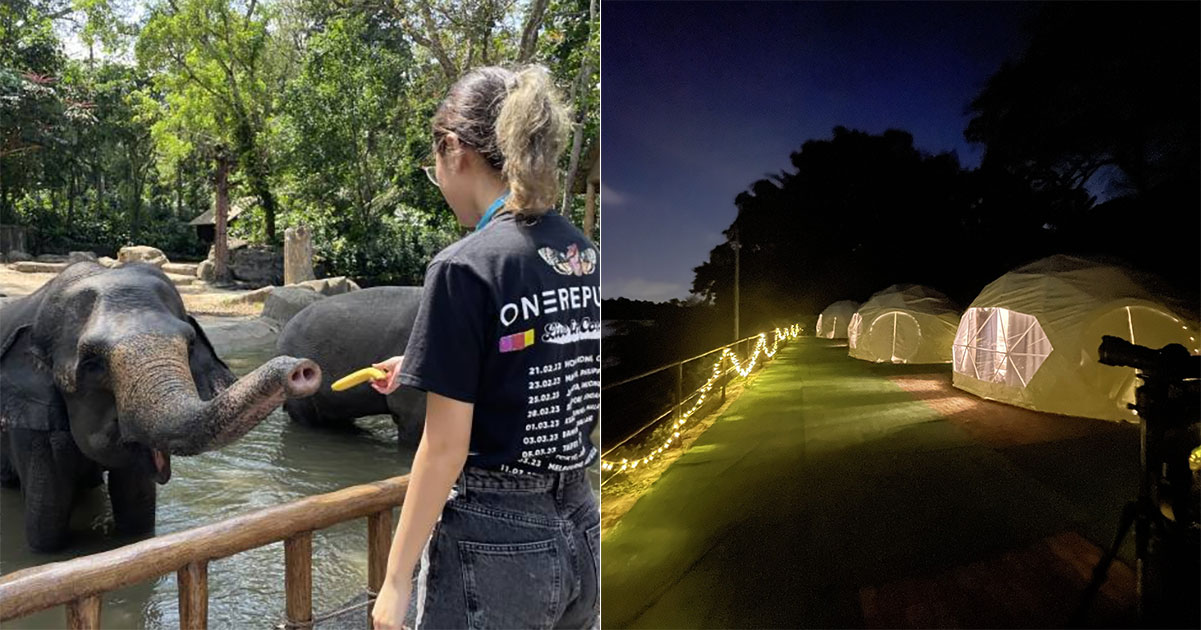Follow us on Telegram for the latest updates: https://t.me/mothershipsg
It had been nearly a decade since I last stepped into the Singapore Zoo.
So, when the media were invited to an exclusive preview of Singapore Zoo's "Glamping in the Wild" programme, which includes a two-day-one-night staycation within the zoo's premises, I jumped at the opportunity to relive some childhood nostalgia.
Check-in
I packed a light duffle bag and a day bag for the one-night stay, arriving punctually at the zoo's entrance at 1:30pm, accompanied by my adventure-loving colleague, Fiona.
Our guide, Xue Qi, was bubbly and cheerful, and we waiting for the rest of the guests to arrive before conducting a pre-programme briefing.
Before the briefing began, we were handed a menu and asked to choose what we would like for dinner.
The menu, which boasted an extensive selection of mains, appeared to be Singaporean-themed, with familiar local fare, such as prawn noodles and laksa.

I went for the prawn noodles, while Fiona chose the BBQ half spring chicken, which one of the friendly facilitators recommended.
We were informed that the menu would be changed monthly.
We also selected the "Wine down" basket for our midnight snack, which included a bottle of red wine, two bottles of sparkling water, and a cheese platter with red grapes.
This basket is offered as an add-on to the programme, and costs S$68.
There is also another option – the "Wild Supplies" basket, which comes sans alcohol, but is loaded with finger food, making it perfect for families with children.
After a quick safety and programme briefing, we dropped off our overnight bags, which were then whisked away to our tents.
Our adventure into the wilderness truly began.
Elephant feeding
First up on the itinerary was an opportunity to meet and feed the zoo's Asian elephants.
On the way to the elephant enclosure, we were fortunate enough to spot the white tigers prowling about.
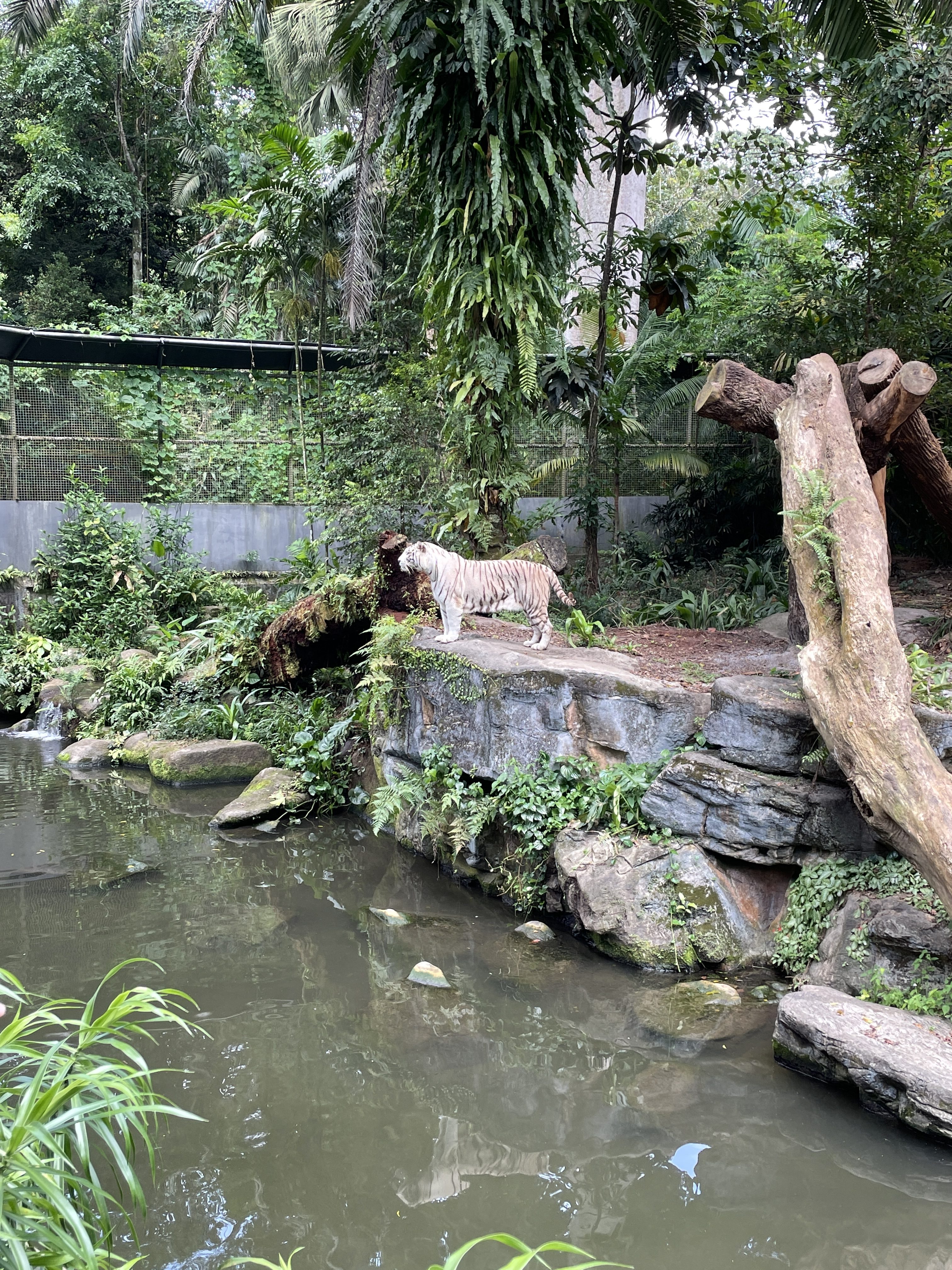
The Asian elephants, some of the zoo's oldest animals, were graceful creatures.
Accompanying us were Komali and Jati, the oldest elephants out of the zoo's herd of five females.
The elephant trainers told us that Komali was born in 1970, while Jati was born in 1984.
This perhaps explains why Komali is the matriarch of the herd, while Jati was a little more timid and tended to take cues from the former.
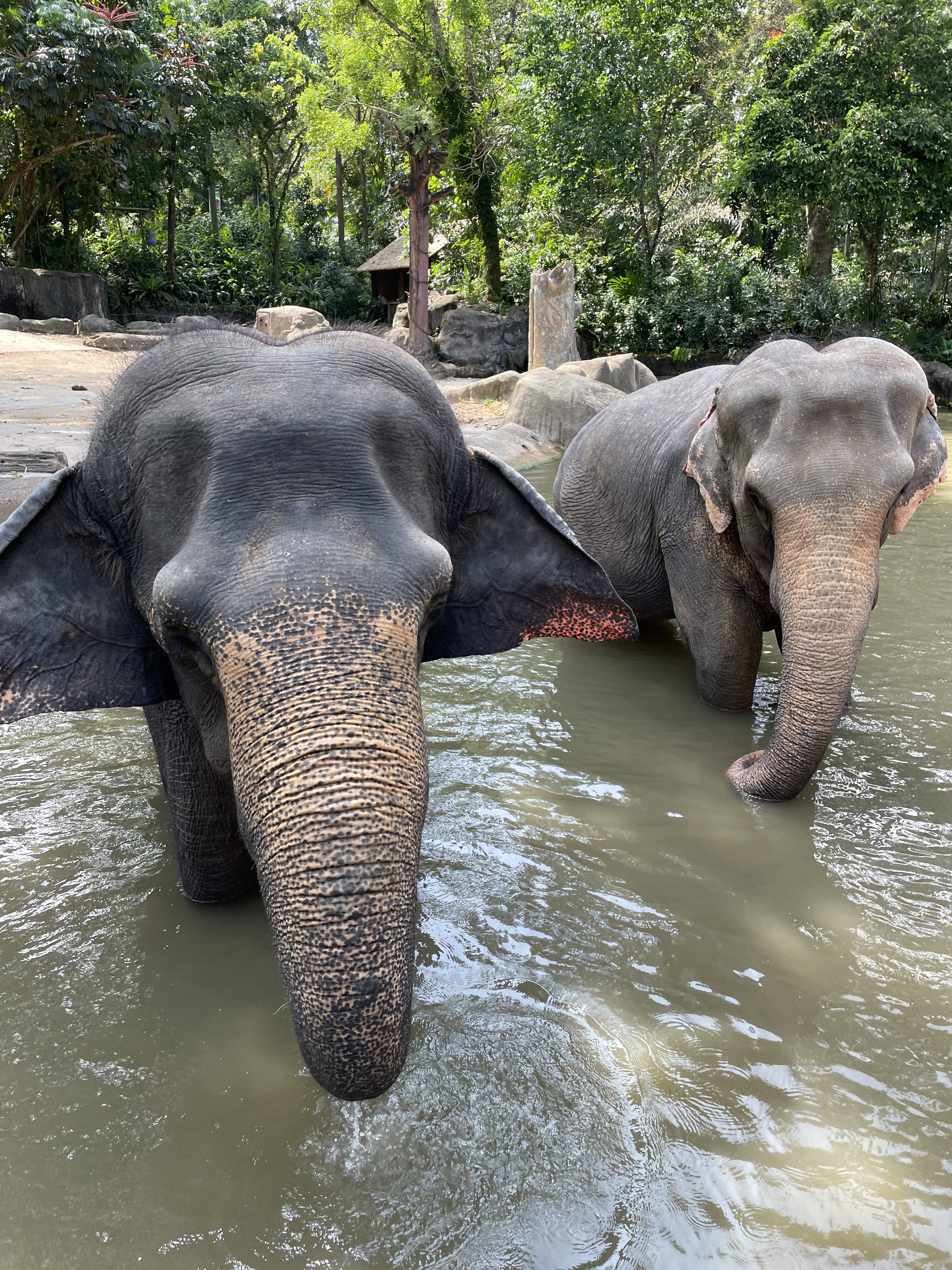
We offered them an assortment of pre-prepared vegetables including carrots, bananas and lettuce.
Even when taking the food we offered, they were polite and gentle.
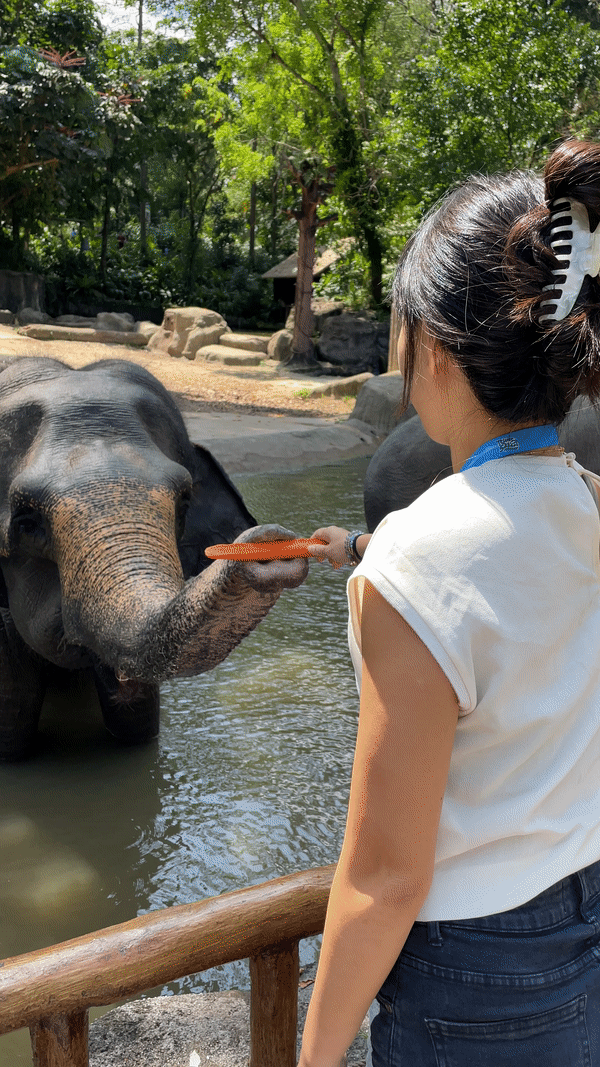
The feeding was an up close and personal experience, where we even got to briefly stroke the elephant's trunks, with the trainers by our side to patiently explain each elephant's habits, unique mannerisms and behaviours.
With a very long bamboo training stick in hand, Jati's trainer pointed it at her feet, just above the water.
To our surprise, Jati raised her foot to touch the end of the pole.
Jati's trainer said the elephants at Singapore Zoo have been taught to raise their foot.
This allows their trainers and carers to check their feet and toenails.
Who knew that Asian elephants have a different number of toenails, five toenails on their front feet and four on their back.
Jati was then rewarded with a sugar cane.
An elephant's intelligence is not to be underestimated, however, as the trainers told us that each elephant had trainers that they liked better than others, and would follow their instructions unquestioningly.
Behind-the-scenes access
This year's programme saw two new additions to the itinerary: Backstage access to Singapore Zoo's wildlife nutrition centre, as well as the wildlife healthcare and research centre.
Starting with the wildlife nutrition centre, we got to go behind the scenes and see how the zoo prepares food for the 17,000 animals under its care.
We were first shown around a dry room, which reminded me a of a pet store.

The dry room was stocked full of animal feed, pellets, kibbles, as well as nutritional supplements.
I initially thought that the room was pretty small for a storage room, and that there wasn't nearly enough food for so many animals.
However, I was reassured by Xue Qi that whatever was in the room was just a week's worth of supplies.
Next, we caught a quick glimpse of the kitchens where fresh food was prepared.
The zoo's central kitchen sees tonnes of food moving in and out every day.
Trucks delivering fresh vegetables, meats and fruits arrive at the zoo bright and early in the morning.
This is when the kitchen staff meticulously wash, chop, cook, weigh, and pack the animals' meals for the day.
Each portion of food is weighed precisely down to the gramme so that it fits the animals' nutritional needs.



However, since the visit was scheduled in the afternoon, the kitchens were emptied out by then.
It is probably for the better as it means that we do not get in the way of the kitchen staff and we certainly do not want to be responsible for delaying the animals' meal time.

Next up on the programme was the zoo's wildlife healthcare and research centre, which is not unlike the ones for humans, except its tools have been adapted to cater to animals.
This included an assortment of oxygen masks in varying sizes.


The Singapore Zoo not only cares for Mandai's animals, but those in the wild too.
We were lucky enough to see a wild snake, which was being treated and will be released back into the wild as soon as its condition has stabilised.
Get well soon, buddy.
Wild Africa guided tour
After the tour, we headed back to the zoo for a guided tour of the Wild Africa trail.
What I expected to be just a walk in the park, literally, turned out to be one of the unexpected highlights of Glamping in the Wild.
As it was nearing 6pm, visitors were filtering out of the zoo, and the animals came out from their dens to wave them goodbye.
A pack of playful African Painted Dogs came out to play and run around their enclosure, and the curious meerkats emerged from their house to perch on their mound, scoping out its surroundings.

We passed by grazing rhinoceroses, zebras and giraffes, with our enthusiastic facilitators eager to provide more facts and flex their animal knowledge.
The facilitators' knowledge of animals seemed to know no bounds, and they were able to field most, if not all, of the questions that my colleague Fiona volleyed at them, even the most random and redundant ones.

Besides their extensive knowledge, they seemed well-acquainted with all of the animals in the enclosures, referring to each and every one of them by their names when explaining their unique habits and quirks.
This made the experience feel really heartwarming and personal, like we were a part of the Singapore Zoo family.
Dinner and night walk
Dinner was pleasant.
The tour around the zoo, while leisurely enough, had made us hungry.
We eagerly awaited the arrival of our prawn noodles and BBQ spring chicken that we had ordered earlier.
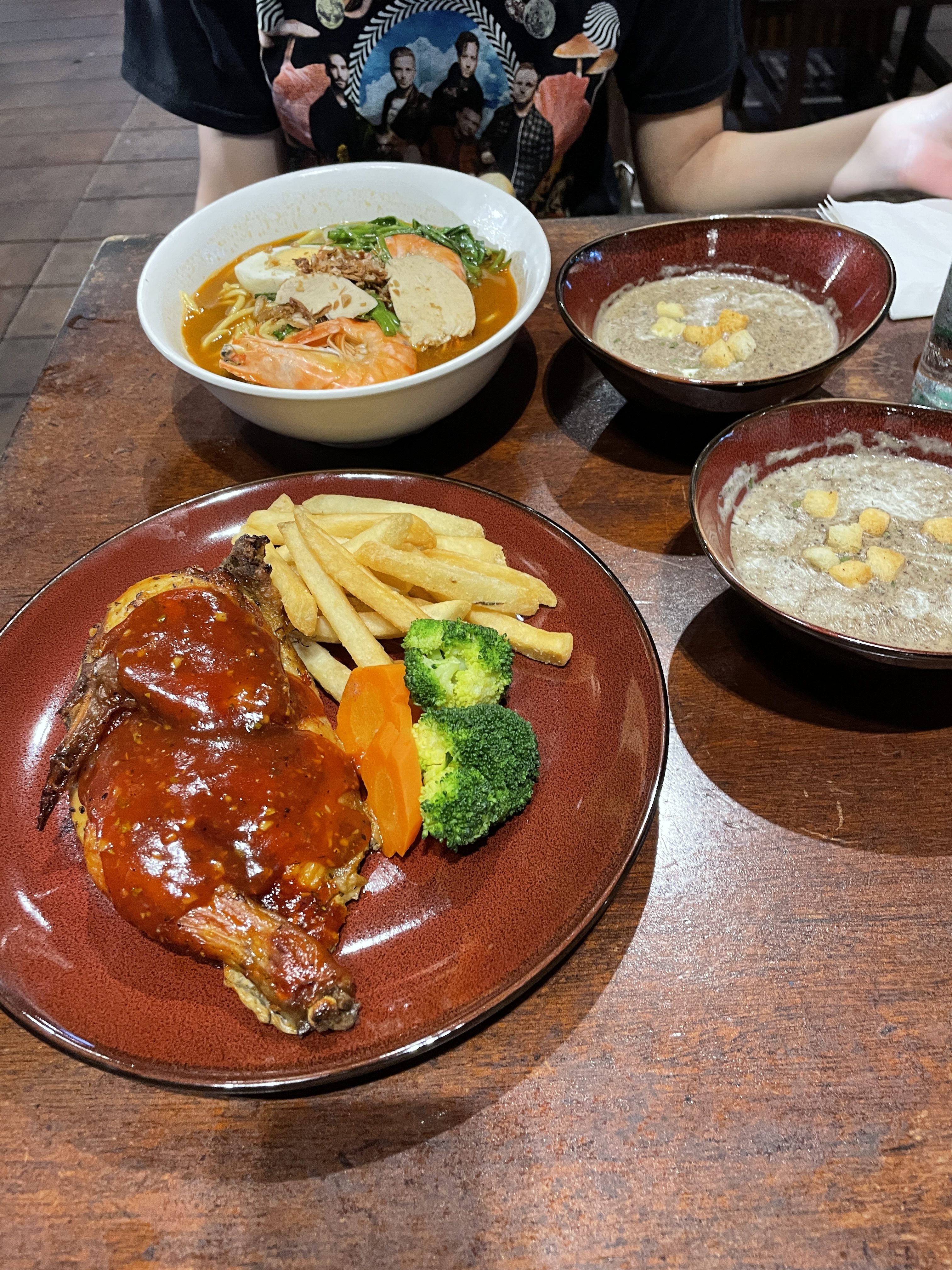
Delicious, but a little on the salty side.
After dinner, we headed on a short night walk to our tents.
The most interesting fact I learnt was that most animals return home to their indoor homes after hours.
This is to ensure that they are protected from the elements at night.
However, a few animals such as the rhinoceroses spend their nights outside, as they apparently quite like the rain.
"If they want to go in, the doors are always open," Xue Qi said.
The rhinoceroses chose to remain outside that night and because of that, we were lucky to see a cheeky pair getting it on.
This was definitely not a sight that you see every day.
 Unrelated rhino picture, but you can use your imagination.
Unrelated rhino picture, but you can use your imagination.
Our task on this night walk was to spot local native wildlife, climbing up trees and swinging about, as the zoo's main stars had turned in for the night.
Even from within the enclosures, the lions made their presence known, releasing loud growls and roars at random intervals.
Our facilitators told us this is how the lions communicated with one another.
On our walk, we managed to see a giraffe poking it's head out above the bushes.
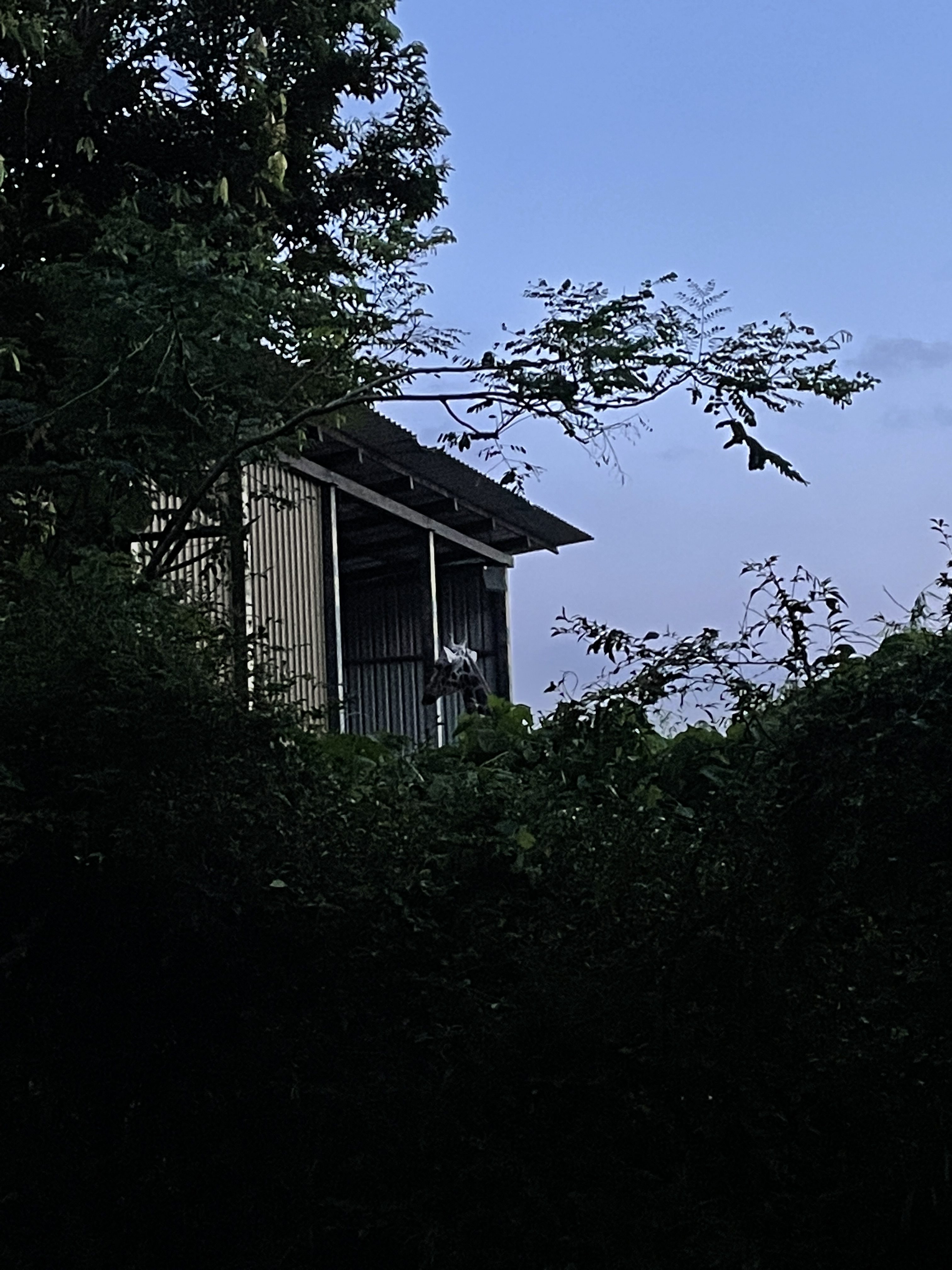
Luckily, we managed to find a couple of Colugos scrambling up trees.
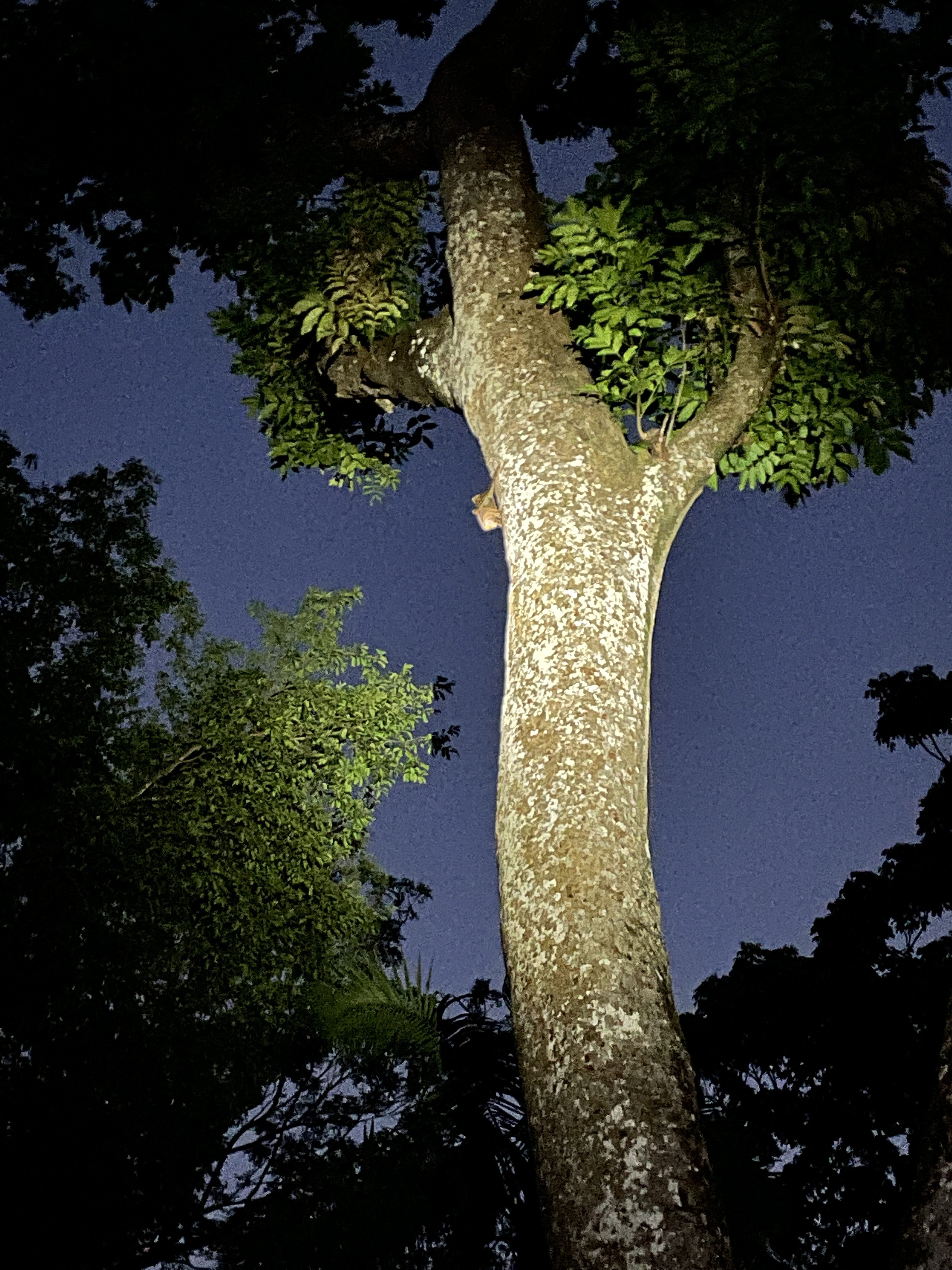
Glamping experience
Now, for the part of the review that you all have been waiting for.
We finally arrived at our humble abode for the night: Fairy-light-lit dome tents against the serene backdrop of the Upper Seletar Reservoir.
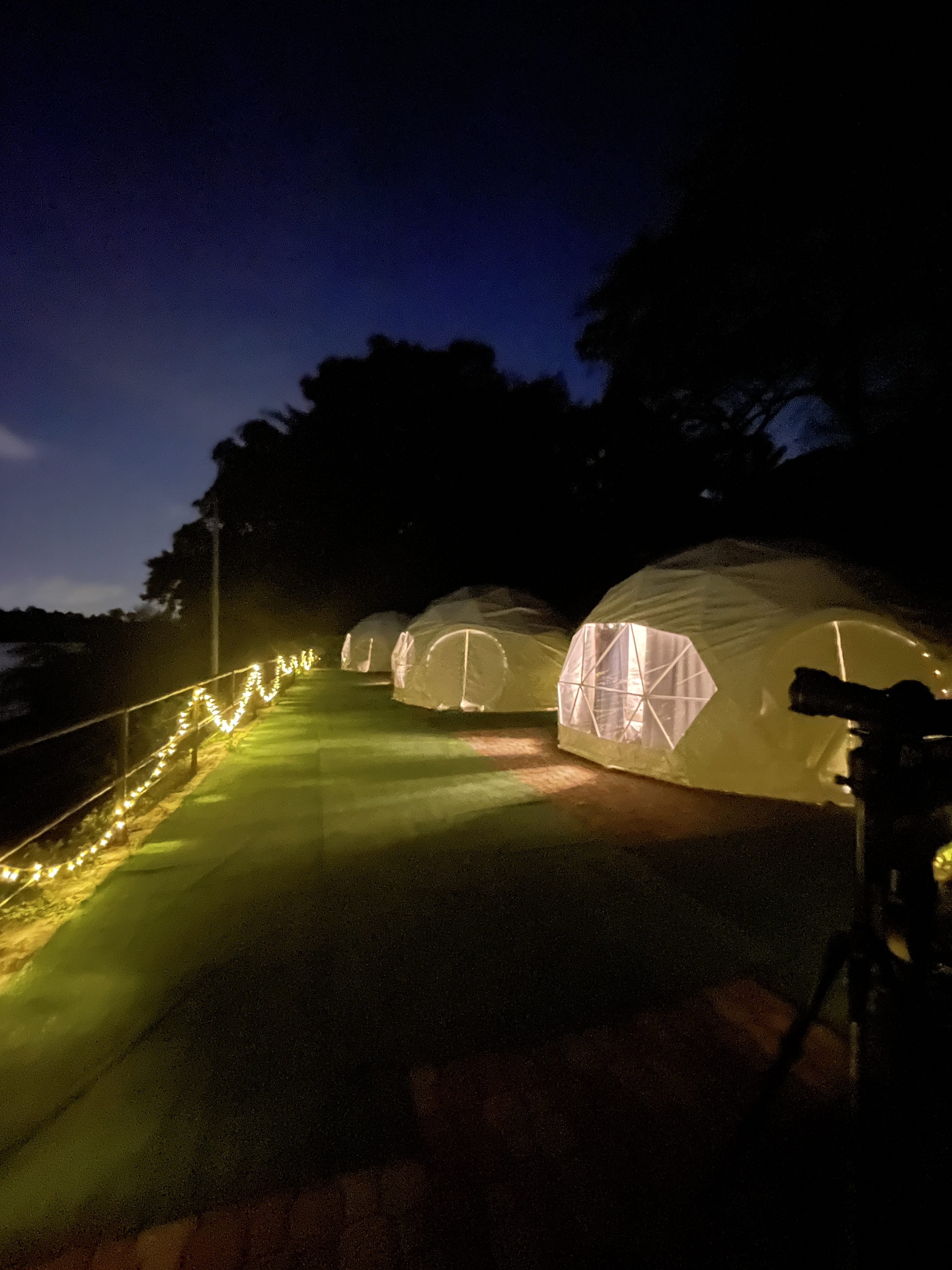

Inside, the tent was brightly lit and comfortably cold, thanks to the portable air-conditioner.
The tent was fitted with the usual First World creature comforts – two double beds with thick blankets, four pillows and four cushions, two foldable camping chairs, and a fan.
There, we were greeted with our "Wine Down" basket, perfect for guests who intend to have classy late-night chit-chats under the stars.
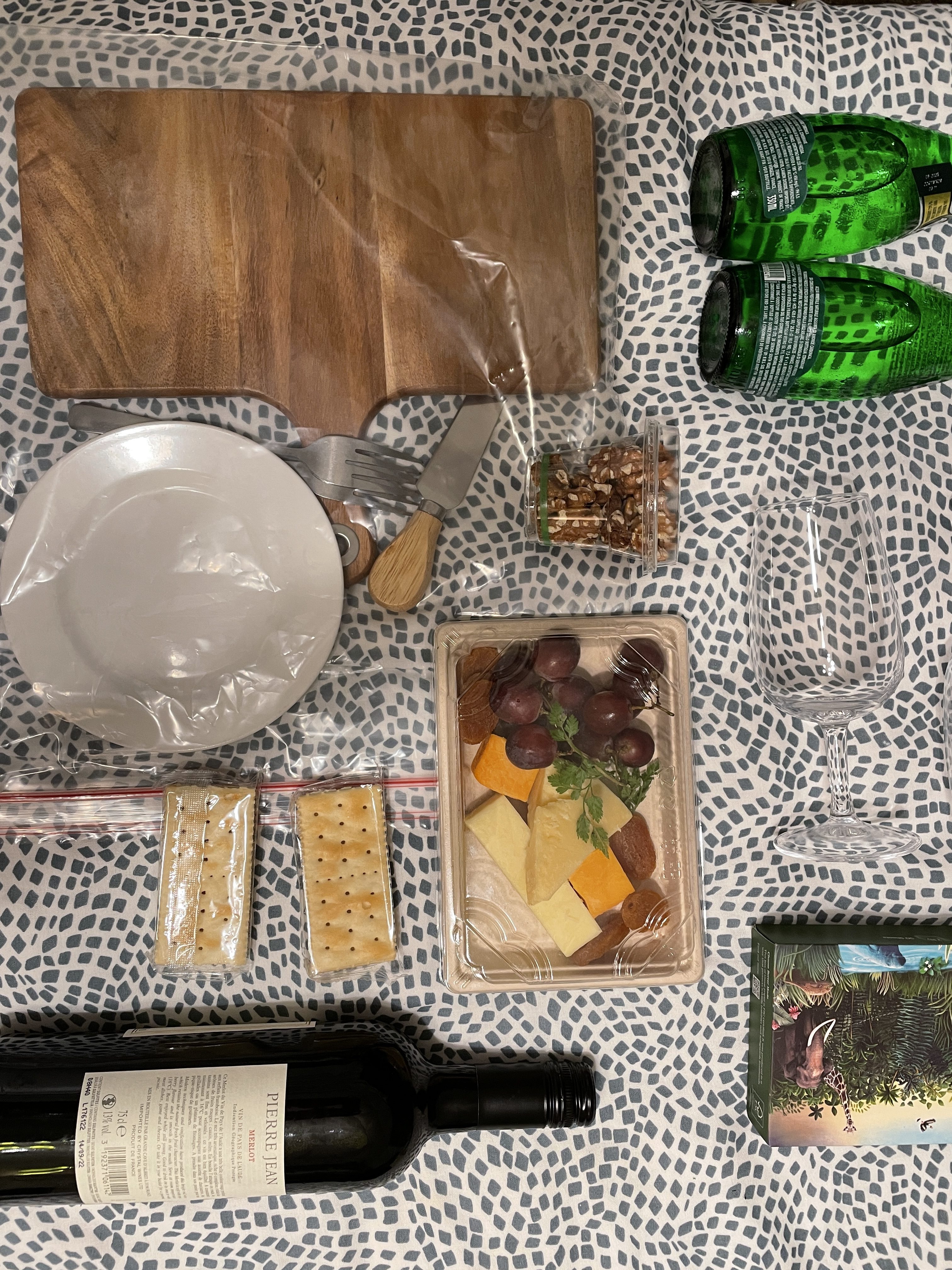
Fiona and I dug into the cheese platter and enjoyed a couple of glasses of vino before calling it a night.
However, I must admit that I did not have the best night's sleep.
Being an incredibly light sleeper, the sounds of the forest and the portable air-con kept me awake.
If you are a deep sleeper, however, this would be a non-issue.
On the bright side, peaceful dawn arrives after the darkest nights.
It was cool to wake up to a pristine view of Upper Seletar Reservoir and breathe in the clean morning air whilst surrounded by soft animal calls, which is definitely not something you get to do every day in Singapore.

While I may not have had the best night's sleep, I was excited for what was the final part of the programme – the breakfast at Ah Meng restaurant, where we would also get to meet and greet some of the zoo's animals.
Unlike the dinner, the breakfast was an international buffet, which included a live omelet station.

As part of the perk for glamping guests, we had the privilege of getting reserved seats at the restaurant.
The front-row seats allowed us a clear view of the animals entering in and out, such as the orangutans which were swinging from tree to tree, keeping us sufficiently entertained while we dug into the breakfast.
We were also given priority to have our pictures taken right next to the animals, before any of the other zoo patrons.


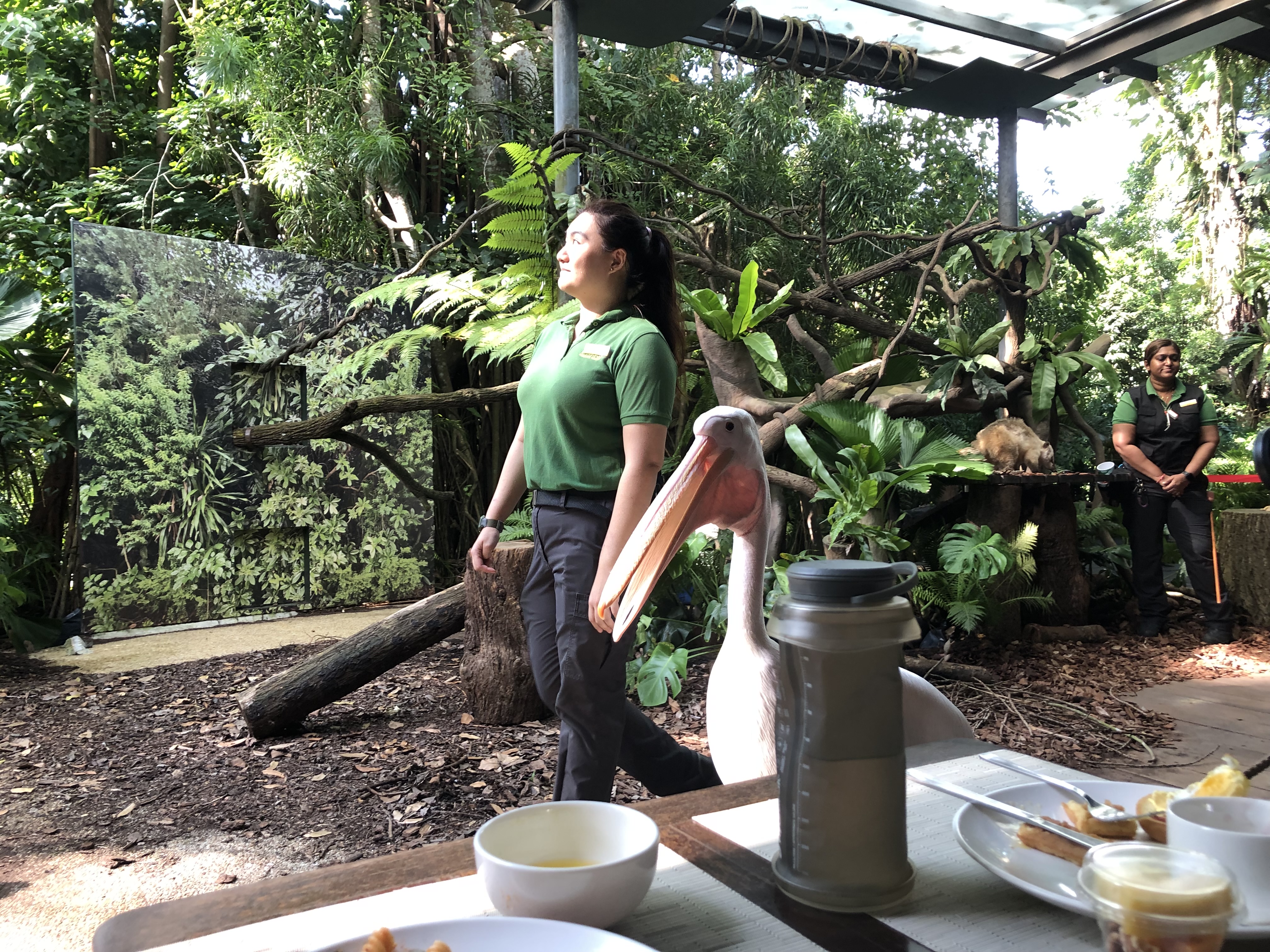
Overall thoughts
Overall, this was a life-enhancing experience indeed.
I had visited the Night Safari in December 2022, but I hadn't been to the zoo in years.
The experience, in many ways, had re-ignited my childhood enthusiasm for animals.
Fiona, who also has not been to the zoo in years, felt the same.
She said it was heartening to see the close relationship that the zoo staff has with all of the animals and she especially enjoyed interacting with the elephants up close.
On the other hand, I appreciated the fact that the animals showcased in the Night Safari, River Safari and Singapore Zoo were all different, which made each park feel individually unique and special.
It is no surprise that international visitors to the Singapore Zoo have marvelled at how it is one of the best zoos in the world.
All photos and videos via Mothership
If you like what you read, follow us on Facebook, Instagram, Twitter and Telegram to get the latest updates.
